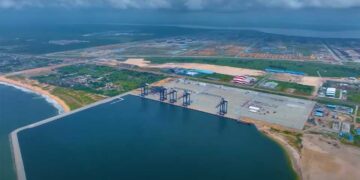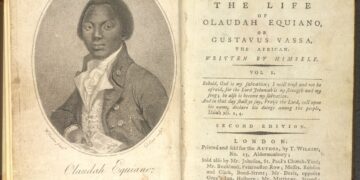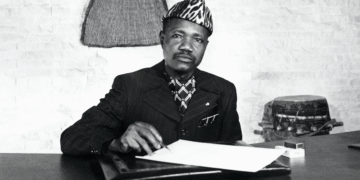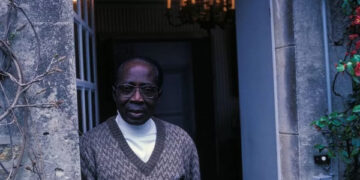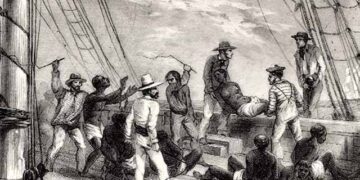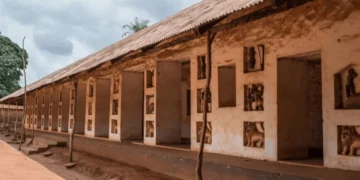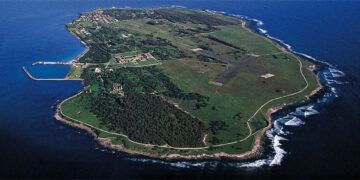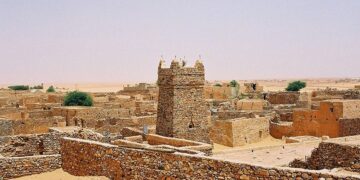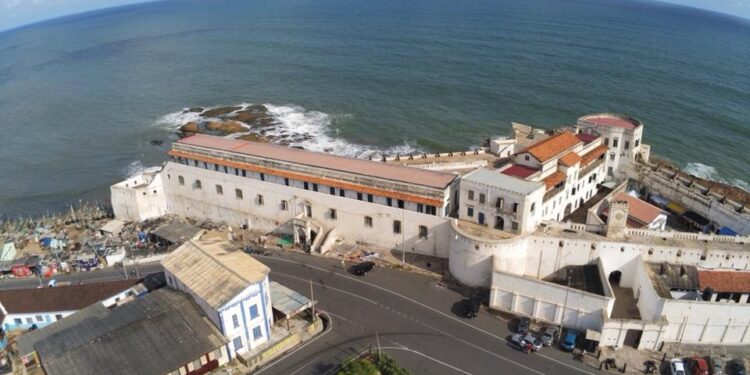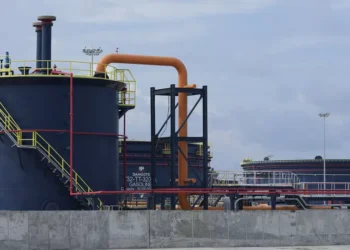Cape Coast Castle stands on Ghana’s rocky coast, overlooking the Atlantic Ocean. This castle, one of the largest trading forts built by Europeans in sub-Saharan Africa, was a center for the exchange of gold, ivory, and timber and also became a major hub in the transatlantic slave trade, through which countless Africans passed into slavery in the New World.
The site’s history could be traced back to the 16th century when it began as a small trading post for the Portuguese, the first European power to establish a presence on what was then known as the “Gold Coast” due to its natural resources. However, actual construction of the castle in its initial form did not begin until 1653 by the Swedish Africa Company. The Swedes built a wooden fort, naming it “Carolsborg” after King Charles X. Their primary purpose at the time was to trade in local resources, particularly gold, which attracted competing European powers.
The Swedish presence did not last long. Amidst the raging colonial conflicts, the Danes captured the fort in 1663. Just a year later, in 1664, it fell to the British after a naval battle, beginning a long period of British control that lasted for nearly three centuries. The British renamed the fort “Cape Coast Castle” and embarked on a major expansion and fortification project, transforming the simple wooden structure into a massive stone fortress capable of withstanding attacks by sea and land from rival European powers and local African kingdoms alike.
With the massive demand for labor on sugarcane and cotton plantations in the Americas and the Caribbean during the 17th and 18th centuries, Cape Coast Castle underwent a radical transformation in its function. It gradually transformed from a commodity trading center to a major collection and transshipment point for African captives. The castle became the headquarters of the British administration on the Gold Coast, from where a complex network of trade that extended deep into the continent was managed.
Captives, captured in tribal warfare or organized kidnappings, were brought from distant inland regions and marched in chains for long distances to the coast. Upon their arrival at Cape Coast Castle, their true ordeal began. They were separated from their families and tribes, stripped of their names and identities, physically examined, and branded with red-hot irons like cattle.
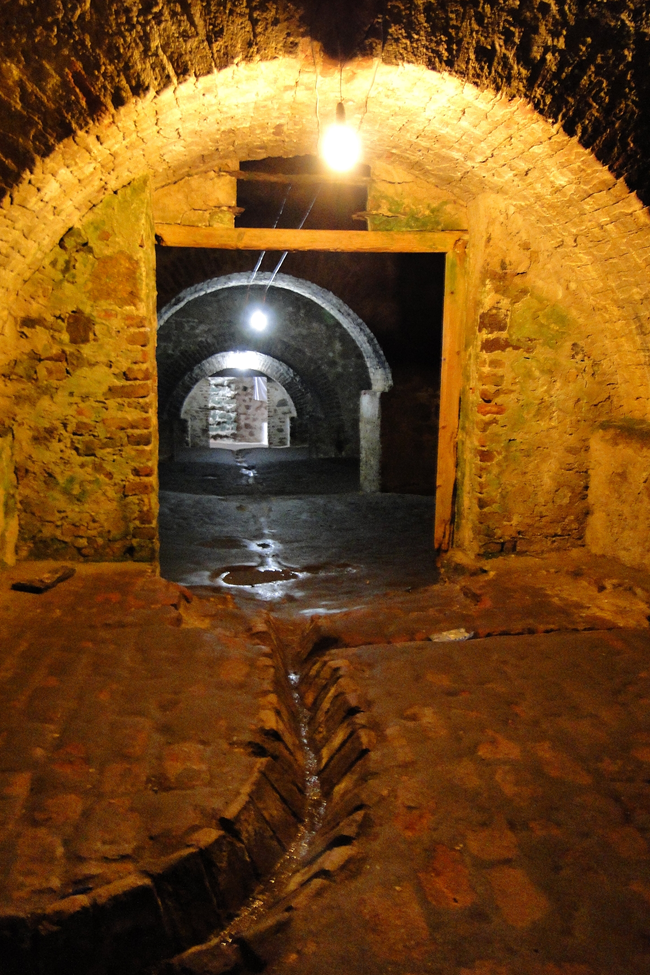
Men, women, and children were crammed into separate, dark underground cells known as “slave dungeons.” These cramped spaces, with their low ceilings and dirt floors, lacked even the most basic standards of ventilation and hygiene. Hundreds of prisoners were crammed into each cell, forced to live for weeks or even months in unspeakable conditions, amid their own human waste, widespread disease, and absolute despair. It is estimated that the mortality rate inside these cells was extremely high even before the deadly sea voyage began.
The tragic irony of the castle’s design was stark. On the upper floors, directly above the death cells, the British governor, officers, officials, and merchants lived in spacious, luxurious rooms with balconies overlooking the ocean. They held their parties, practiced their religious rituals in an elegant chapel built within the castle walls, and conducted their businesses, oblivious to the muffled sounds of suffering emanating beneath their feet.
As slave ships came into view, the captives were led from their cells and led through a dark tunnel that led directly to the ocean shore. The end of this tunnel was a hole in the castle’s seawall known as the “Gate of No Return.” Once through this gate, the captives are forcibly loaded onto ships and begin the “Middle Passage,” the harrowing transatlantic journey that few survived.
With the passage of the Slave Trade Abolition Act in 1807, the function of Cape Coast Castle began to change again. Although the illegal trade continued for some time, the castle increasingly became a military and administrative base to consolidate direct British colonial rule. The castle continued to serve as the center of British rule until 1877, when the colonial capital of the Gold Coast was moved from Cape Coast to Accra.
After the capital was moved, the castle’s strategic importance diminished, and a period of relative neglect began. However, it continued to be used as a local police station, a post office, and, occasionally, a prison.
After Ghana’s independence in 1957, the new government recognized the castle’s immense historical significance. Efforts began to restore and preserve it as part of the national heritage. Today, Cape Coast Castle is one of the best-preserved European castles in Ghana and serves as a vibrant historical museum visited by thousands of tourists, researchers, and students annually, as well as many members of African descent from the diaspora who come on emotional pilgrimages to explore their roots.
The castle, along with other castles and forts in Ghana, was inscribed on the UNESCO World Heritage List in 1979 in recognition of its outstanding universal value as a testimony to the history of the slave trade.
Guided tours of the castle offer visitors a profound experience. The tour typically begins on the upper floors where the European officials lived, before gradually descending into the suffocating darkness of the slave cells. Standing in these cells, seeing the remains of the original flooring, tainted by centuries of suffering, and passing through the “Gate of No Return” is an experience that leaves an indelible mark on visitors.












